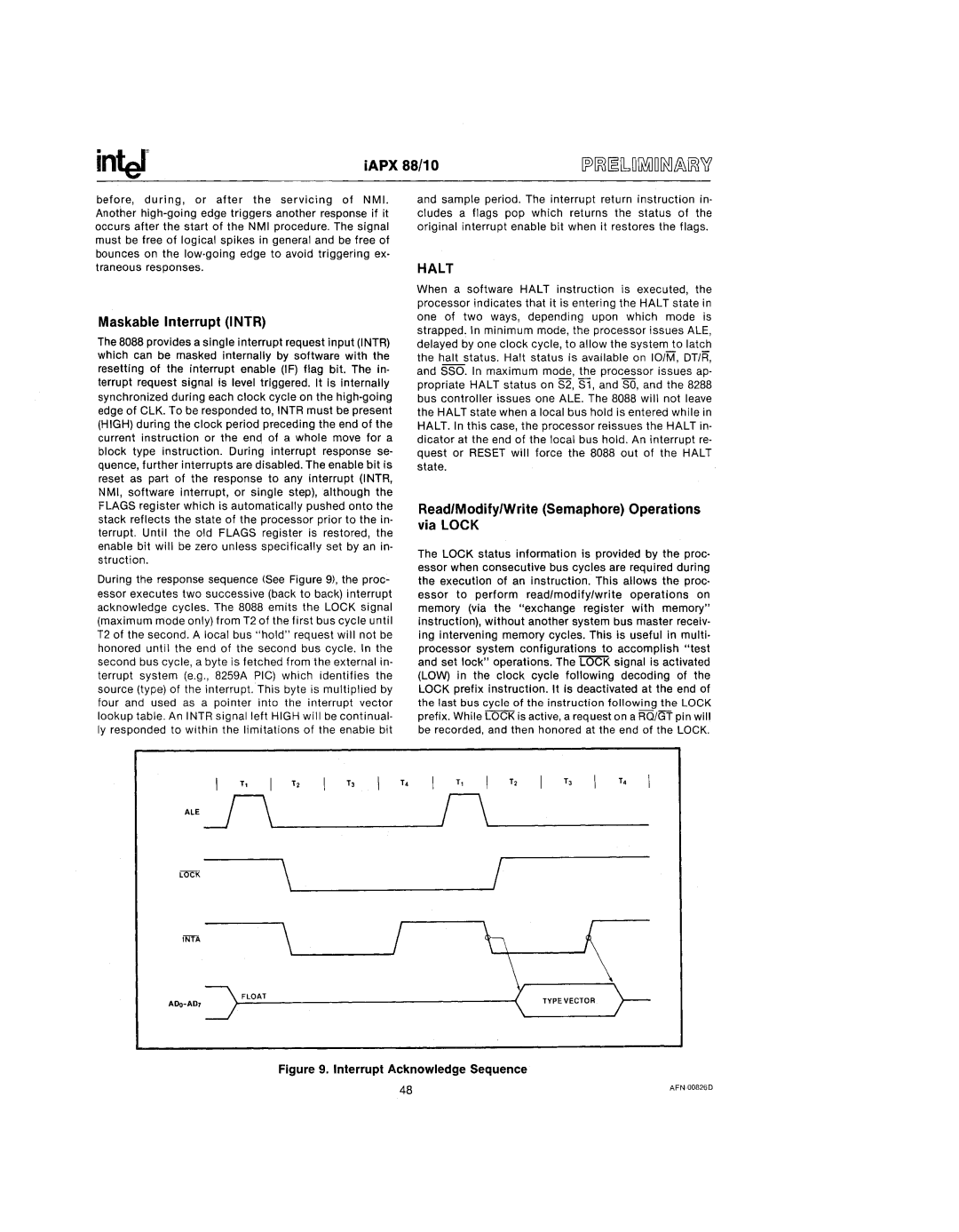
iAPX 88/10
before, during, or after the servicing of NMI. Another
Maskable Interrupt (INTR)
The 8088 provides a single interrupt request input (INTR) which can be masked internally by software with the resetting of the interrupt enable (IF) flag bit. The in- terrupt request signal is level triggered. It is internally synchronized during each clock cycle on the
During the response sequence (See Figure 9), the proc- essor executes two successive (back to back) interrupt acknowledge cycles. The 8088 emits the LOCK signal (maximum mode only) from T2 of the first bus cycle until T2 of the second. A local bus "hold" request will not be honored until the end of the second bus cycle. In the second bus cycle, a byte is fetched from the external in- terrupt system (e.g., 8259A PIC) which identifies the source (type) of the interrupt. This byte is multiplied by four and used as a pointer into the interrupt vector lookup table. An INTR signal left HIGH will be continual- ly responded to within the limitations of the enable bit
and sample period. The interrupt return instruction in- cludes a flags pop which returns the status of the original interrupt enable bit when it restores the flags.
HALT
When a software HALT instruction is executed, the processor indicates that it is entering the HALT state in one of two ways, depending upon which mode is strapped. In minimum mode, the processor issues ALE,
delayed by one clock cycle, to allow the system to latch the halt status. Halt status is available on IaiM', DT/R,
and SSO. In maximum mode, the processor issues ap- propriate HALT status on S2, S1, and SO, and the 8288 bus controller issues one ALE. The 8088 will not leave the HALT state when a local bus hold is entered while in HALT. In this case, the processor reissues the HALT in- dicator at the end of the local bus hold. An interrupt re- quest or RESET will force the 8088 out of the HALT state.
Read/Modify/Write (Semaphore) Operations via LOCK
The LOCK status information is provided by the proc- essor when consecutive bus cycles are required during the execution of an instruction. This allows the proc- essor to perform read/modify/write operations on memory (via the "exchange register with memory" instruction), without another system bus master receiv- ing intervening memory cycles. This is useful in multi- processor system configurations to accomplish "test and set lock" operations. The IOCR signal is activated (LOW) in the clock cycle following decoding of the LOCK prefix instruction. It is deactivated at the end of the last bus cycle of the instruction following the LOCK prefix. While LOCK is active, a request on a RQ/GT pin will be recorded, and then honored at the end of the LOCK.
T1 | \ T2T3T4 | T1 I | T, |
| |||
ALE ~L | ,n~_- | ||
| JI |
| |
FLOAT
Figure 9_ Interrupt Acknowledge Sequence
48
